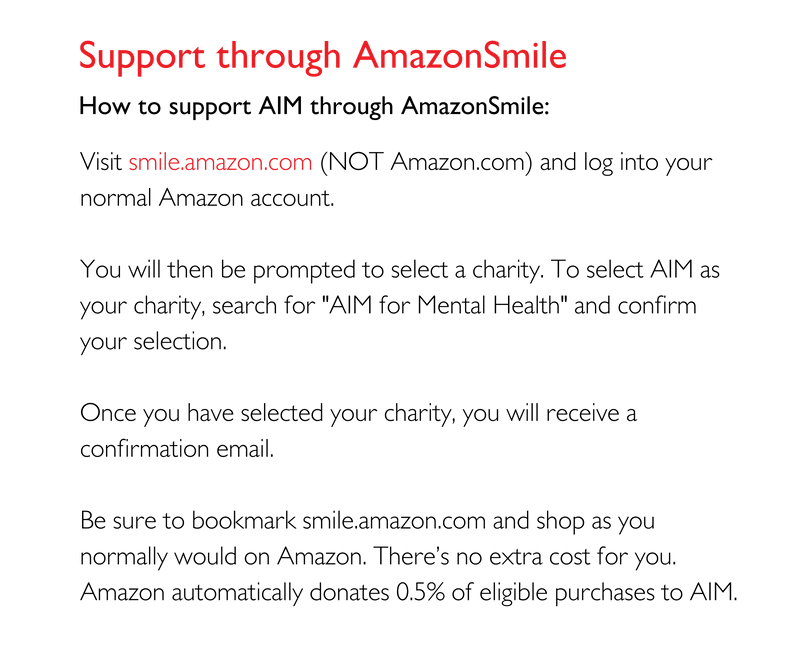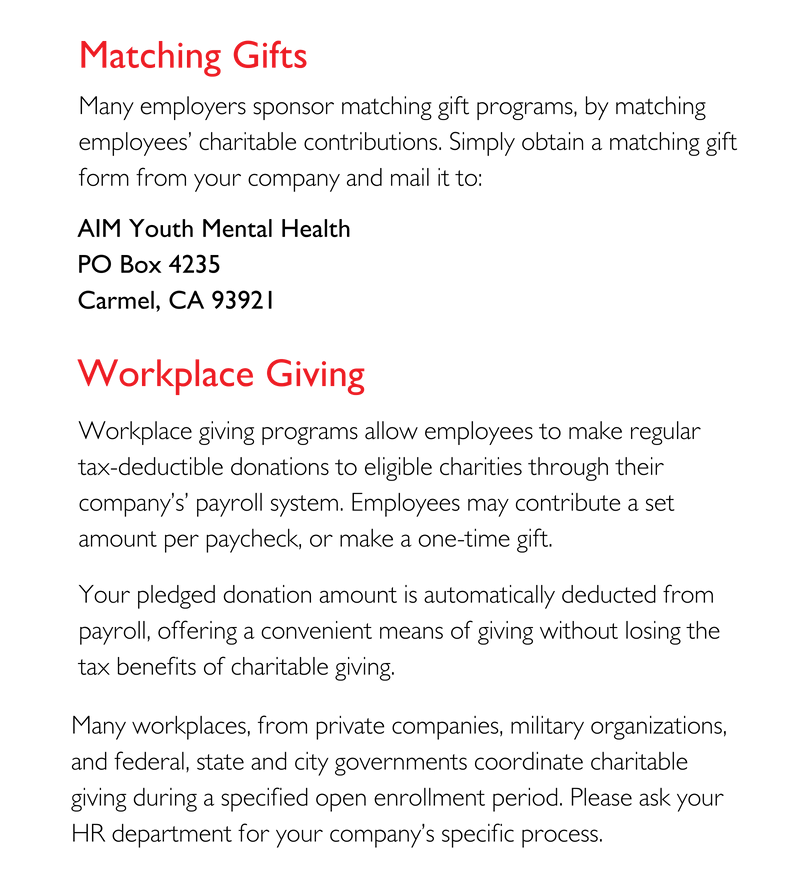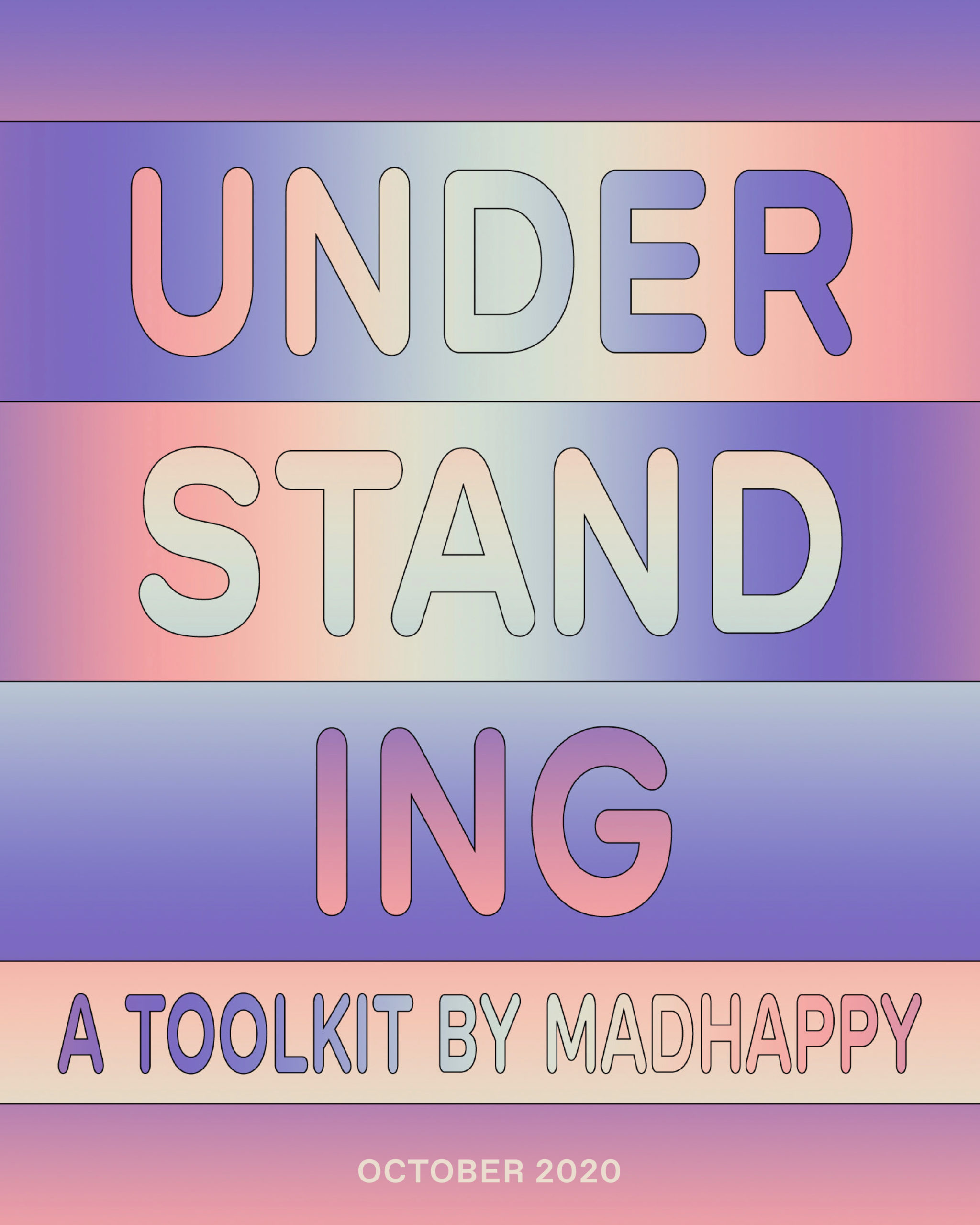
During a time where the zeitgeist is filled with divisiveness, we all could use a bit more of understanding.
When it comes to understanding, we think about it on three levels: understanding the issue at large, understanding ourselves, and understanding others. Each of these are intimately woven and interconnected. If we don’t understand the issue, how can we understand someone’s experience of that issue? If we don’t understand ourselves, how can we understand someone else?
At Madhappy, the issue we want to spread awareness and understanding of is mental health. Mental health is seemingly ubiquitous yet we still have a tendency to shy away from discussing it. But why? When we talk about something, and learn to understand it intimately, it becomes less scary. Talking to others about our mental health can help us to understand ourselves better, our friends better, and the issue as a whole. It’s also the easiest and most effective way to destigmatize mental health issues.
So today, we’re going to give you the tools to understand mental health a little bit better so that you can in turn, develop a deeper understanding of yourself, and develop empathy and understanding for others. It’s another step toward our goal of making the world a more optimistic place, one conversation at a time.
Understanding An Issue
The world is constantly evolving which means we are having to constantly learn, change, and grow. With that, comes introducing and understanding topics and issues that are new and sometimes foreign to us. When you’re being presented with an issue for the first time, or are presenting an issue that is new to someone else, the goal should always be: understanding.
The goal isn’t to change one’s mind, just to understand. Then later on, you can make up your mind with a full idea of the issue at hand.
The problem is, many times we don’t approach things in this way.
In fact, we approach new ideas and interpret them in ways that confirm our pre-existing beliefs and perspectives. This is called the confirmation bias. This mistake can influence our judgments and decision-making in catastrophic ways because of its disregard for factual information.
However, when you expand your mind, you are able to more critically understand an issue and the world around you. It doesn’t mean you have to agree or disagree with the information being presented. In fact, seeking information that’s contrary to what you believe can help you understand and empathize with someone who may disagree with you.
This is hard to do because it requires us to recognize the grey in the world. Things become less black and white. But that’s what is important. By accepting that there is a little grey in every issue, and then finding that grey, we can find greater understanding and empathy.
Understanding Ourselves
When we develop a deeper understanding of the issue at large, we can take those lessons and apply them to our own self growth. In turn, the more deeply we connect to every part of ourselves, the more we can connect with others in the same way.
Once you find your footing and knowledge of mental health growing, you can start to explore deeper. All of this stems from awareness. It’s about taking yourself off autopilot; starting to understand yourself, without judgment, so you can learn to foster more self love and self understanding.
We can begin to understand ourselves a bit better in many different ways. In the same way that mental health is extremely individual, so is our own processes of working on our mental health. Find what feels good!
If you don’t know what understanding yourself looks like, here are some things to play around with:
- Become aware of the constant stream of thoughts in your mind (we call this voice in your head your “internal roommate”)
- Become aware of your predictable patterns of behavior
- Spend time alone
- Learn to respond, not react
- Learn and explore your boundaries and then honor them
- Explore your conditioning and coping mechanisms – are they serving you?
We can develop these understandings via different methods. Here are some of our favorites:
- Talking it out with a therapist
- Journaling
- Meditating
- Scheduling alone time. Whether that means going to a park to be in nature, taking a bubble bath, lighting candles, or putting on music to write it out.
Understanding Others
Being misunderstood is one of the greatest triggers we have as human beings. The best way to understand others is to approach from a perspective of empathy, rather than sympathy.
Empathy fuels connection, sympathy drives disconnection.
Brene Brown has a succinct animated short that sums it up perfectly. She describes it as someone in a deep, dark hole, shouting out, “I’m stuck! It’s dark. I’m overwhelmed.” Empathy is crawling down the ladder into that hole, turning on a light and saying, “Hey, I know what it’s like down here. You’re not alone.” Sympathy is someone sticking their head into the hole and claiming, “Ohhh! It’s bad, huh? At least you still have that one light!”
Researchers have identified four aspects of empathy:
- Perspective taking: the ability to recognize someone else’s perspective as their truth
- Staying out of judgment: understanding them based on their reality, not yours
- Recognizing emotion in other people: this requires connecting to yourself first
- Communicating that emotion: this should be done with love and empathy
Empathy is feeling with people. It is a choice and it takes vulnerability. In order to connect with someone else, you have to connect to some part of yourself that knows that feeling. Empathy facilitates true understanding.
When having conversations with friends, family members, or acquaintances, here are things to keep in mind so that you are operating out of empathy:
What to do:
- Create the space for mutual, authentic sharing
- Ask clarifying questions
- Listen to understand, not to give advice
What not to do:
- Speak only from your own experience or opinions
- Interrupt
- Assign meaning to someone else’s intentions
Understanding drives connection. Understanding helps others feel less alone. Understanding means recognizing that we don’t have all the answers right now. Understanding requires acknowledging that nearly 1 in 4 youth are struggling with a mental health condition of some kind and 75% of all mental disorders begin before age 24. Understanding means seeing that some people are fighting battles that we may never fully identify with.
Listen to the stories and experiences of others. Learn about symptoms of mental illness. The deeper your understanding and the more knowledge you can share with others, the closer we get to a world of mentally healthy youth.
Understanding Mental Health
Understanding mental health and mental illness may seem like a daunting task, but it all boils down to the individual.
Why do some people develop mental illnesses while others don’t? Why does one person’s experience of depression look way different than another’s? How come they started feeling anxiety at age 14 and I’m just starting now at age 26?
Mental illness is extremely common… and extremely individual.
We know that not all brains are wired the same. The hard part is grasping what that wiring is and why one brain functions differently than another.
A mental health condition isn’t usually the result of just genetics or one life event, but multiple linking causes. You may be familiar with the term “nature vs. nurture.” In truth, the answer to where mental health conditions come from is a bit of both.
Let’s start with some Fast Facts about mental health to clear up any confusion:
- 1 in 5 Americans will experience a mental health issue this year – you are not alone!
- 75% of mental health challenges develop before the age of 24.
- Mental health results from a combination of genetic predisposition and environmental factors.
- Mental health challenges don’t have to last forever.
- Recovery from mental health challenges isn’t linear; it’s unique to each person. There is no such thing as “moving backwards” or “falling off track.”
- Learning and discussing mental health issues helps combat their stigma.
- Living successfully in recovery is possible.
Conclusion
While these are tools to develop our own understanding of mental health, ourselves, and others – there is still more work to be done.
Research is the answer to understand, to really understand, the wiring of our brains and all the questions that come with living with any mental health condition.
Clinical research focuses on finding better treatments and cures for youth struggling with their mental health today. This could be anything from studying how video games affect social behaviors later in life to how to most effectively teach our youth to engage with the internet healthfully.
To be more technical, clinical research is a branch of healthcare science that determines the safety and effectiveness of medications, devices, diagnostic products and treatment regimens intended for human use. These may be used for prevention, treatment, diagnosis or for relieving symptoms of an illness.
The psychologists and psychiatrists who are on the front lines treating youth have told us that there are many unfunded research projects that, if funded, would lead to better treatments and possibly cures for mental illness in the short-term.
While there are some treatments available, there remains an urgent need to develop better, more precise, effective, and earlier evidence-based interventions for youth experiencing mental distress and disorders. Understanding comes through research and how research can lead to mental wellness.
Which is exactly why we’re partnering with our friends at Madhappy and The Local Optimist on their October 27 release to help fund urgently needed mental health research.



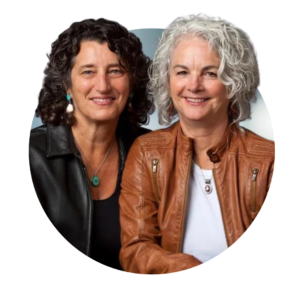
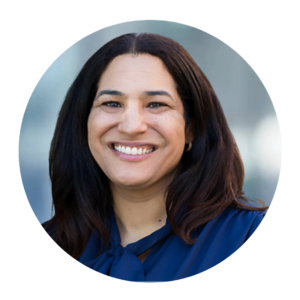








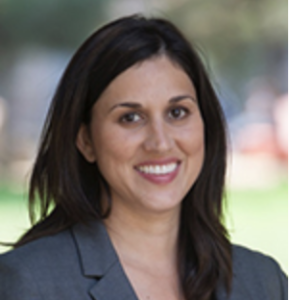




 Moving Upstream: A Proactive Approach to Addressing Behaviors and Bullying
Moving Upstream: A Proactive Approach to Addressing Behaviors and Bullying Krista Reuther is the Assistant Director of Ohana’s Community Health and Prevention Program. She received her Masters in Public Health and Social Work at UC Berkeley. She comes to this position after 14 years of clinical social work experience at Stanford Children’s Hospital in pediatric oncology, critical care, and bereavement. Her goal is to reduce the incidence of mental illness in children and adolescents in Monterey County.
Krista Reuther is the Assistant Director of Ohana’s Community Health and Prevention Program. She received her Masters in Public Health and Social Work at UC Berkeley. She comes to this position after 14 years of clinical social work experience at Stanford Children’s Hospital in pediatric oncology, critical care, and bereavement. Her goal is to reduce the incidence of mental illness in children and adolescents in Monterey County. Dr. Guss is a 35-year veteran educator with a doctorate degree in Educational Leadership. She served as a classroom teacher for 10 years, including two years as a teacher in a bilingual program in South Central Los Angeles. She has also served as a college professor, mentor teacher for new teachers, and a master teacher for teacher candidates completing their student teaching experience. She continues to be a strong advocate for the teaching profession.
Dr. Guss is a 35-year veteran educator with a doctorate degree in Educational Leadership. She served as a classroom teacher for 10 years, including two years as a teacher in a bilingual program in South Central Los Angeles. She has also served as a college professor, mentor teacher for new teachers, and a master teacher for teacher candidates completing their student teaching experience. She continues to be a strong advocate for the teaching profession. Fellowship: Stanford University School of Medicine (1994) CA
Fellowship: Stanford University School of Medicine (1994) CA Michael G. Thompson, Ph.D. is a consultant, author and psychologist specializing in children and families. He is the supervising psychologist for the Belmont Hill School and has worked in more than seven hundred schools across the United States, as well as in international schools in Central America, Europe, Africa and Asia.
Michael G. Thompson, Ph.D. is a consultant, author and psychologist specializing in children and families. He is the supervising psychologist for the Belmont Hill School and has worked in more than seven hundred schools across the United States, as well as in international schools in Central America, Europe, Africa and Asia.
 is 15 years old and a sophomore at Marina High School in Marina, CA. Her academic interests include math, history, and psychology. She joined the AIM Ideas Lab in 2021 because she wanted to be a part of something that could have a great impact on her community. Marwa is interested in youth mental health because she has always been fascinated with the human mind and she wants to support those that are suffering who may feel like their challenges in life aren’t important enough or are too afraid to seek necessary help.
is 15 years old and a sophomore at Marina High School in Marina, CA. Her academic interests include math, history, and psychology. She joined the AIM Ideas Lab in 2021 because she wanted to be a part of something that could have a great impact on her community. Marwa is interested in youth mental health because she has always been fascinated with the human mind and she wants to support those that are suffering who may feel like their challenges in life aren’t important enough or are too afraid to seek necessary help. Giovanna Panetta is a 16 year old junior at Carmel High School. She has always been called to STEM subjects, specifically biology. The AIM Ideas Lab instantly attracted her attention as a research opportunity. Gia has always comprehended the importance of mental health. She knows that COVID only exacerbated previously existing problems, and that as a community we can try and find the root of those problems. Mental health is an integral part of life, and can impede a body’s ability to be healthy. She strongly believes that life is worth living, and she wants to help anyone that thinks otherwise.
Giovanna Panetta is a 16 year old junior at Carmel High School. She has always been called to STEM subjects, specifically biology. The AIM Ideas Lab instantly attracted her attention as a research opportunity. Gia has always comprehended the importance of mental health. She knows that COVID only exacerbated previously existing problems, and that as a community we can try and find the root of those problems. Mental health is an integral part of life, and can impede a body’s ability to be healthy. She strongly believes that life is worth living, and she wants to help anyone that thinks otherwise. Dr. Friedman completed her undergraduate degree in Psychology from University of California San Diego (UCSD). She went on to complete her masters and doctorate degrees (Ph.D.) in Clinical Psychology from Rosalind Franklin University of Medicine and Science/Chicago Medical School. Dr. Friedman completed her pre-doctoral internship at Rush University Medical Center, Chicago, IL, and her post-doctoral fellowship training at the VA San Diego Healthcare System. Her clinical training and experience has been focused primarily on comprehensive assessment and effective treatments for anxiety, mood and related disorders. Dr. Friedman has extensive experience in providing Cognitive Behavioral Therapies for anxiety disorders (e.g. worry, OCD, social anxiety, phobias and PTSD), depression, adjustment disorders/life stress, insomnia and body-focused repetitive behaviors (e.g. Trichotillomania and skin picking). She has received training in evidence-based interventions for a variety of specific problems, including exposure with response prevention (ERP) for treatment of OCD, Prolonged Exposure (PE) for treatment of PTSD, and Cognitive Behavioral Therapy for Insomnia (CBT-I). Moreover, she has specialty training in the treatment of childhood anxiety and related disorders, such as ADHD, selective mutism, separation anxiety, PTSD, depression and specific phobias. In addition, Dr. Friedman has developed an expertise in research on Trichotillomania and body-focused repetitive behaviors, which has led to numerous local and national presentations. Dr. Friedman regularly attends local and national conferences, training seminars and workshops in order to stay informed on the most up to date treatments and apply state of the art science into her clinical practice.
Dr. Friedman completed her undergraduate degree in Psychology from University of California San Diego (UCSD). She went on to complete her masters and doctorate degrees (Ph.D.) in Clinical Psychology from Rosalind Franklin University of Medicine and Science/Chicago Medical School. Dr. Friedman completed her pre-doctoral internship at Rush University Medical Center, Chicago, IL, and her post-doctoral fellowship training at the VA San Diego Healthcare System. Her clinical training and experience has been focused primarily on comprehensive assessment and effective treatments for anxiety, mood and related disorders. Dr. Friedman has extensive experience in providing Cognitive Behavioral Therapies for anxiety disorders (e.g. worry, OCD, social anxiety, phobias and PTSD), depression, adjustment disorders/life stress, insomnia and body-focused repetitive behaviors (e.g. Trichotillomania and skin picking). She has received training in evidence-based interventions for a variety of specific problems, including exposure with response prevention (ERP) for treatment of OCD, Prolonged Exposure (PE) for treatment of PTSD, and Cognitive Behavioral Therapy for Insomnia (CBT-I). Moreover, she has specialty training in the treatment of childhood anxiety and related disorders, such as ADHD, selective mutism, separation anxiety, PTSD, depression and specific phobias. In addition, Dr. Friedman has developed an expertise in research on Trichotillomania and body-focused repetitive behaviors, which has led to numerous local and national presentations. Dr. Friedman regularly attends local and national conferences, training seminars and workshops in order to stay informed on the most up to date treatments and apply state of the art science into her clinical practice. Dr. Piacentini is a board-certified clinical child and adolescent psychologist and Professor in the UCLA Department of Psychiatry and Biobehavioral Sciences. He directs the UCLA Child OCD, Anxiety, and Tic Disorders Clinic and Tourette Association Center of Excellence which provide diagnostic evaluation and treatment (both therapy and medication) for youth with the above problems. He also directs the UCLA Center for Child Anxiety Resilence, Education, and Support (CARES; carescenter.ucla.edu) which provides education and programming to parents, teachers, and clinicians about anxiety prevention and management.
Dr. Piacentini is a board-certified clinical child and adolescent psychologist and Professor in the UCLA Department of Psychiatry and Biobehavioral Sciences. He directs the UCLA Child OCD, Anxiety, and Tic Disorders Clinic and Tourette Association Center of Excellence which provide diagnostic evaluation and treatment (both therapy and medication) for youth with the above problems. He also directs the UCLA Center for Child Anxiety Resilence, Education, and Support (CARES; carescenter.ucla.edu) which provides education and programming to parents, teachers, and clinicians about anxiety prevention and management. Citlalli Nava is 18 years old and a first year majoring in Psychology at Hartnell Community College in Salinas, CA. She is passionate about understanding how mental health affects how youth think, act, and feel. Citlalli joined the AIM Ideas Lab in 2021 after witnessing the increase in mental health challenges in teenagers and considering the mental health issues they are facing. Citlalli is interested in youth mental health because it is a real problem faced by her generation.
Citlalli Nava is 18 years old and a first year majoring in Psychology at Hartnell Community College in Salinas, CA. She is passionate about understanding how mental health affects how youth think, act, and feel. Citlalli joined the AIM Ideas Lab in 2021 after witnessing the increase in mental health challenges in teenagers and considering the mental health issues they are facing. Citlalli is interested in youth mental health because it is a real problem faced by her generation. Clinical and community psychologist and health care innovator Arthur C. Evans Jr., PhD, is CEO of the American Psychological Association, the leading scientific and professional organization representing psychology in the United States. With more than 146,000 researchers, educators, clinicians, consultants, and students as members, APA promotes and disseminates psychological knowledge to benefit society and improve lives – a mission consistent with Evans’ life work.
Clinical and community psychologist and health care innovator Arthur C. Evans Jr., PhD, is CEO of the American Psychological Association, the leading scientific and professional organization representing psychology in the United States. With more than 146,000 researchers, educators, clinicians, consultants, and students as members, APA promotes and disseminates psychological knowledge to benefit society and improve lives – a mission consistent with Evans’ life work.
